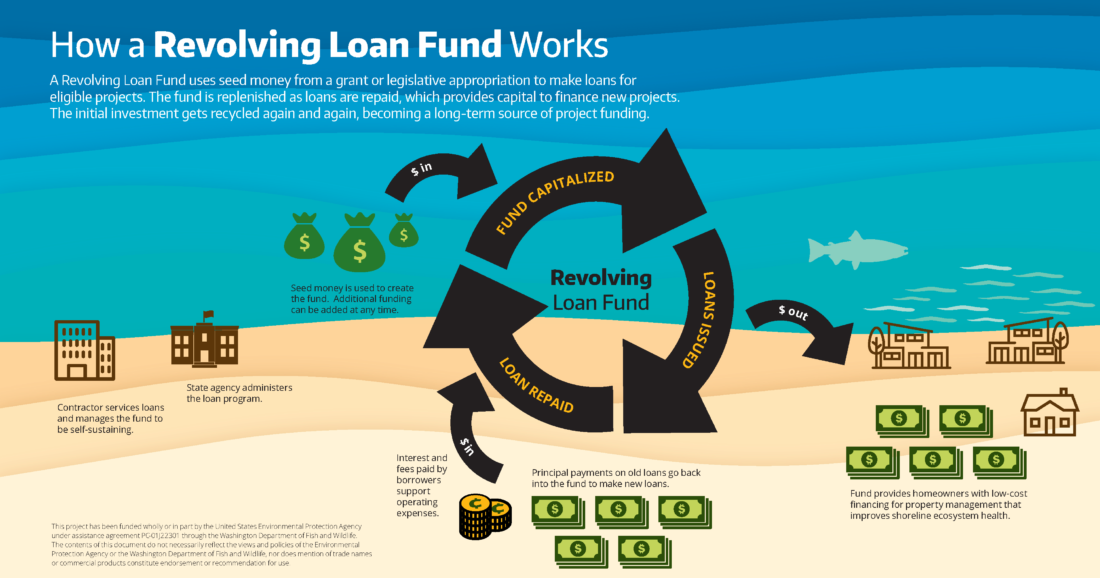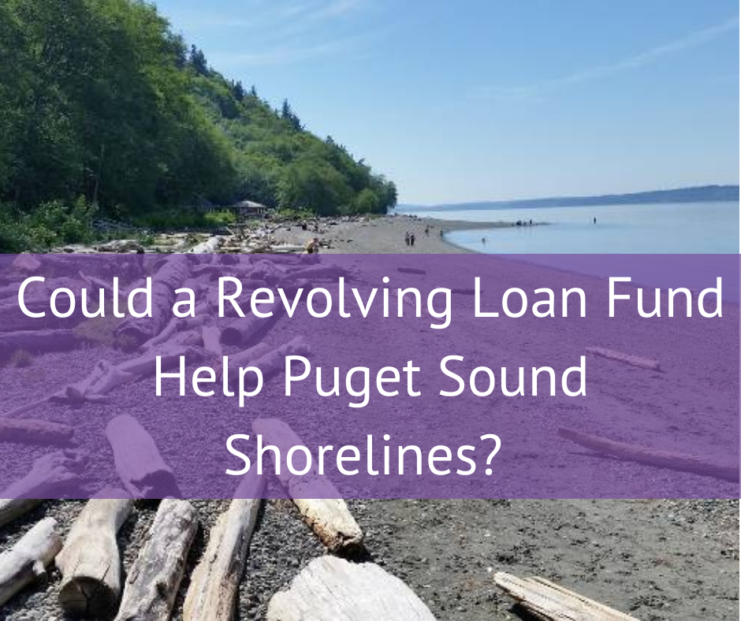Shoreline Revolving Loan feasibility study
Since 2014, local Shore Friendly programs have offered technical assistance and financial incentives to encourage voluntary armor removal projects on residential parcels. “Armoring” is the practice of using physical structures to protect shorelines from coastal erosion, which can damage beaches and erode habitat.
There are local Shore Friendly programs across the Puget Sound – find your local Shore Friendly Program!
Local Shore Friendly programs have engaged with hundreds of waterfront homeowners and facilitated restoration of roughly 4,000 linear feet of critical beach habitat. However, existing financial incentives are not sufficient to address the cost barrier associated with expensive marine construction projects. A revolving loan fund is an innovative approach to providing low-cost financing as an inventive approach. The approach could support development of a new Shore Friendly incentive to help Puget Sound homeowners finance beach restoration and sea level rise adaptation.

Why is this issue important?
Shoreline armor damages beaches and degrades critical habitat for fish and wildlife. By armoring shorelines, habitat for crucial forage fish and other marine organisms is lost, along with public beach front by restricting the natural movement of sediments. Hard armor not only buries part of the beach, but it worsens erosion on nearby beaches and harms the delicate ecological balance that ensures the survival of salmon, shellfish, and other native species.
As sea level rises, armor can cause more damage by preventing shoreline habitats from shifting inland. Waterfront homeowners are increasingly concerned about coastal flooding and interested in options like elevating and moving homes inland. When combined with armor removal, these adaptation measures can increase the resilience of both human and ecological communities.
Results
Puget Sound Institute, Coastal Geologic Services, and Northern Economics assessed the feasibility of a program that would finance projects to improve shoreline ecosystem health. The report explores examines the possibilities of a state-sponsored revolving-fund loan program. This type of program would begin with seed money provided through a legislative appropriation or one of the existing grant programs that provide funding for Puget Sound restoration. As the loans are repaid, the incoming money goes back out to finance new loans, so the fund becomes “revolving.” New money could be added if additional funding becomes available to increase the number of loans available each year.
Because revolving loan funds are replenished as loans are repaid, a relatively low initial investment can have a large impact. Financial modeling indicates that $4.5 million in seed money could fund $9.7 million in projects over the first 15 years of a loan program. As little as $600,000 should be enough to cover program start-up costs and initial fund capitalization in year one; additional seed money could be added to the program over several years.
The report and supporting documents are available at the Encyclopedia of the Puget Sound.
What’s next?
This feasibility report ends with an outline of the steps needed to develop a Shore Friendly loan program. The next step is to identify a state agency champion willing to either dedicate existing staff time, or apply for grants to hire a temporary position, to secure funding and engage potential partners to develop program guidelines. Criteria are proposed for evaluating potential roles for lead and supporting agencies, and a qualitative evaluation of potential partners is provided.
Did you know?
The Shoreline Armoring Implementation Strategy encourages incentives which assist marine shoreline landowners in reducing their hard armor impacts. A near-term priority for the strategy was to expand financial incentive alternatives available to property owners to motivate ecologically friendly shoreline management. This project explores an innovative approach to an incentive program by reviewing similar revolving loan programs throughout the US that use innovative techniques to provide grants or low-cost loans to property owners, and best practices and next steps for program implementation.

